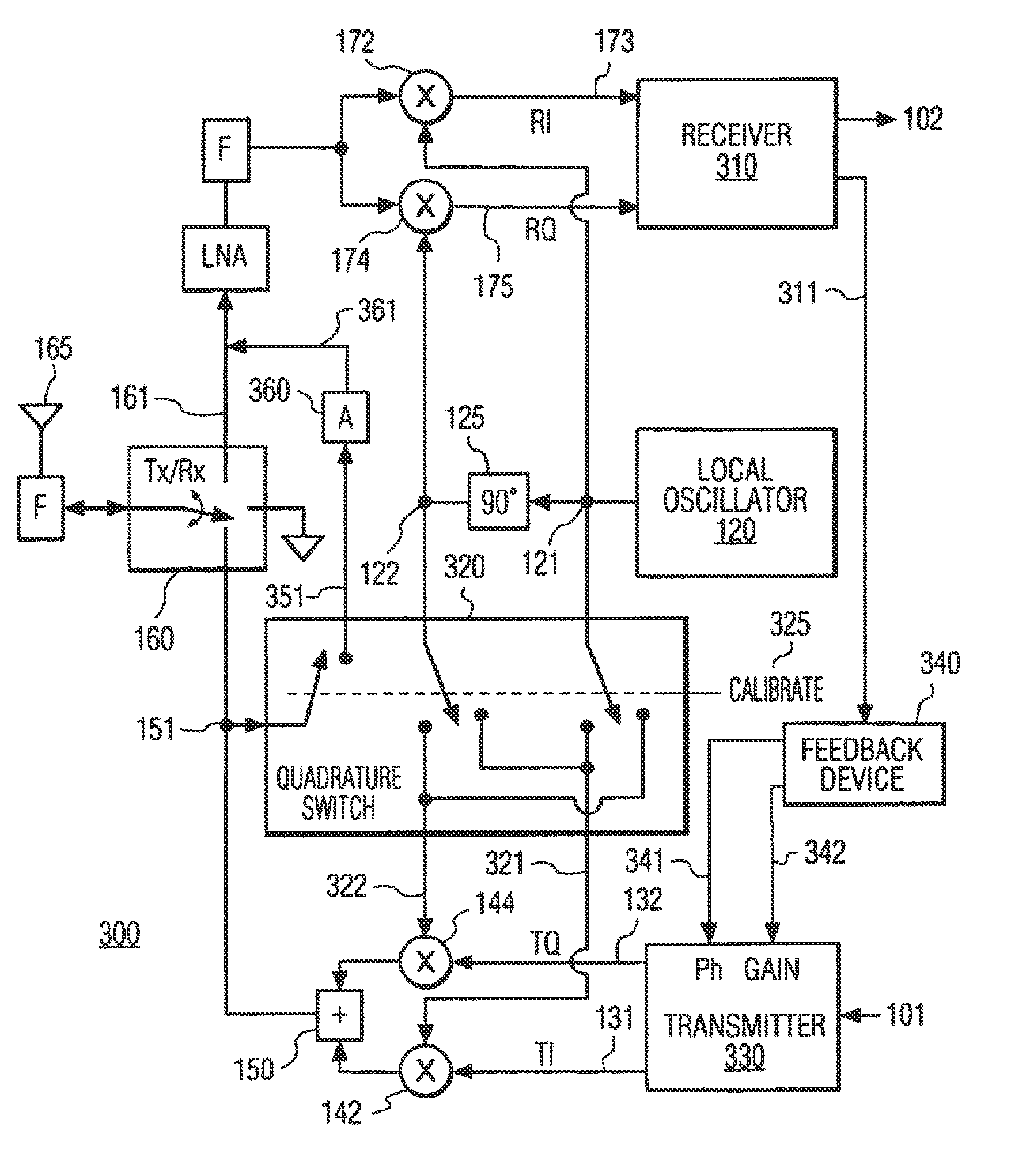Transmitter image suppression in TDD transceivers
a transceiver and transmitter image technology, applied in the field of communication, can solve the problems of high cost and complexity of filtering process, steep roll-off, more costly and complex, etc., and achieve the effect of minimizing the transmission of unwanted image frequency signals
- Summary
- Abstract
- Description
- Claims
- Application Information
AI Technical Summary
Benefits of technology
Problems solved by technology
Method used
Image
Examples
Embodiment Construction
[0021]FIG. 3 illustrates an example block diagram of a time-division-duplex transceiver 300 in accordance with this invention. The transceiver 300 is configured to allow for the receiver 310 of the transceiver 300 to receive the composite transmit signal 151 from the transmitter 330 of the transceiver 300. A switch 320 effects the coupling of the composite signal 151 to the demodulators 172, 174 when a calibrate signal 325 is asserted. Also illustrated is an optional attenuation device 360 that attenuates the switched composite signal 151 to form an attenuated composite signal 361 at a signal strength corresponding to the signal strength of the typical received composite signal 161 from the antenna 165. While in the calibrate mode, the receive / transmit switch 160 decouples the received composite signal 161 from the receive signal path. The receiver 310 provides a characterization signal 311, such as a signal strength indication at one or more select frequencies, that is fed back to ...
PUM
 Login to View More
Login to View More Abstract
Description
Claims
Application Information
 Login to View More
Login to View More - R&D
- Intellectual Property
- Life Sciences
- Materials
- Tech Scout
- Unparalleled Data Quality
- Higher Quality Content
- 60% Fewer Hallucinations
Browse by: Latest US Patents, China's latest patents, Technical Efficacy Thesaurus, Application Domain, Technology Topic, Popular Technical Reports.
© 2025 PatSnap. All rights reserved.Legal|Privacy policy|Modern Slavery Act Transparency Statement|Sitemap|About US| Contact US: help@patsnap.com



